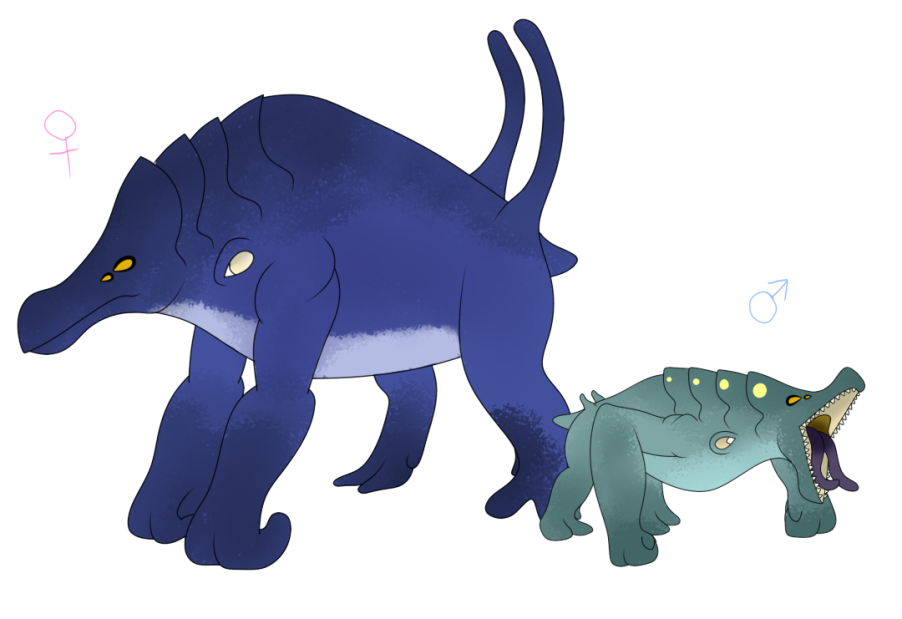
Living on a large tropical island on Ionis III, the Handlebar Knucklewalker primarily feeds on fruit, with the occasional small critter supplementing its diet. This species displays one of the more striking examples of sexual dimorphism observed on the planet.
Females stand about 5.5 feet (1.6 meters) at the shoulder and weigh an average of 400 pounds (181 kg), while males are less than half that size – measuring around 2 feet (0.6 meters) at the shoulder and weighing in at just 24 pounds (11 kg). Their lifestyles diverge as sharply as their size: males are arboreal, living among the tree analogs and feeding primarily on canopy fruit, while females remain ground-dwelling, foraging by rearing up to pluck fruit within reach.
At birth, the sexes appear quite similar. Young females have more male-like proportions until they undergo a growth spurt and morphological changes around age two. One of the species’ most curious adaptations is found on the female’s posterior: the so-called “handlebars.” These bony protrusions serve as anchoring points during mating, allowing the much smaller males to grip securely while mounted. This function has led to sexual selection favoring females with more prominent handles and males with greater upper body strength.
After mating, males return to the trees while females gestate for approximately seven months, eventually giving birth to one or two offspring. The female will care for her young for about a year before abandoning them.
The evolutionary origin of the handlebars remains uncertain. Fossil evidence of possible ancestors suggests these structures may have begun as vestigial bony outgrowths (potentially serving a defensive purpose) but this remains speculative.
By TigerRed